In Trinbago, there is no racism, only prejudice. Well, daiz wha some people try to explain to mih after mih piece last week. Come to the US and Canada, they told me, to experience “real” racism—I have been to the US some years ago US and have experienced it first-hand.
Missed, evidently, was the key point of that initial piece, which was that racism and racist ideas, the thoughts built around the notion that “a certain group of people are ‘naturally’ (genetically) and/or culturally impure, inferior and contaminating” that inspire racist actions, are expressed in many different ways and are constantly evolving.
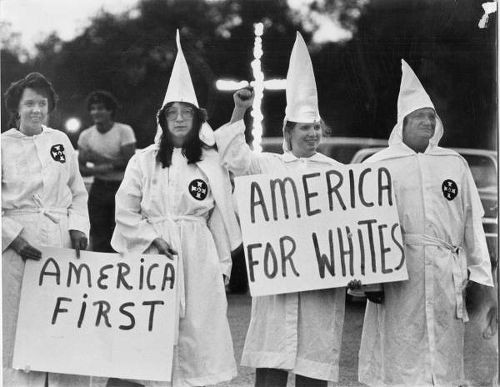
(Copyright Mark Foley/AP)
For those in the back, therefore, who didn’t hear the first time, let me repeat that racism, that hierarchical “othering” which, in this context, is white superiority/non-white (graded) inferiority and impurity, exists here in sweet T&T.
It’s hard to understand how people can not logically figure out that divisive ideas instilled to keep exploited people apart and subdued don’t just disappear in a few short years—particularly when that serves some people’s interests. It’s tightly interwoven into the fabric of our society; indeed, white masculinist universality still constitutes the default model.
These beliefs, however, are expressed more in the legal statutes, religious teachings, education systems and notions of “proper” hair and modes of dress for certain places and occasions. They’re even present in the Carnival we like to think proves that “all ah we is one.” They’re also very much present in the culture in law enforcement agencies and in Eurocentric values; its aggressive, alienating way of dealing with those it considers disposable is what we see in the “solutions” to violent crime as articulated by the people I mentioned in Part I.
Both racism and racist ideas are separate yet connected by that very core element of an inferior/superior dichotomy. The only question really is whether said hierarchical groups are the way they are by nature or nurture (culture).
Space doesn’t permit the kind of detail this discussion warrants but methinks we need to include a specific study of “race” and racism in the secondary schools’ Social Studies curriculum. I understand that there is a similar course in UWI.
In my opinion, it needs to be extended to the secondary schools so that cultivated among our youth is a proper understanding of how our society came to be this way and how that fits into a global socio-economic structure.
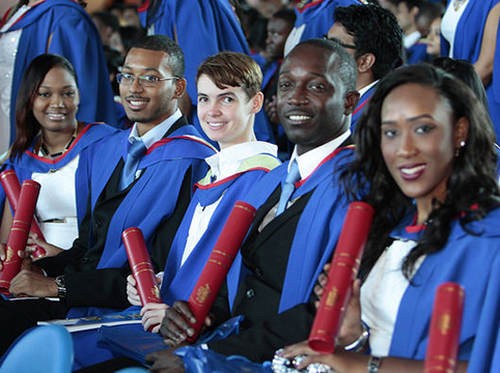
(Copyright The UWI)
And no, this eh about hating white people, eh. It is, however, a good way to understand the irrational fears many of them have about you. Yes, bet your sweet ass that many of them do. After all, isn’t racism built on a kind of fear and isn’t it that fear which provokes all sorts of irrational actions?
So, studies like that will make one very much aware that, as well-intentioned and sincere as they are, the calls for togetherness and racial equality because “we are all one people” are deeply subversive and offensive to those holding power whose perceptions of the world are built on the foundational conviction that some people are permanently inferior and polluting.
Through the works of Corey Robin (Fear: the History of a Political Idea), Marimba Ani (Yurugu: an African-centred Critique of European Cultural Thought and Behaviour) and Jean DeLumeau (Sin and Fear: the Emergence of a Western Guilt Culture 14th-18th Centuries) we can connect modern-day fear and contempt shown to a resident of Laventille, Sea Lots or the Beetham to very ancient insecurities codified in patriarchal Greece.
We can do this via ideas of the irrational, violent savagery of non-white, especially dark-skinned people which were prevalent even in scholarly books and opinions of the 19th Century that were circulated in Trinidad right up until “Independence.”
But let’s go back a bit.
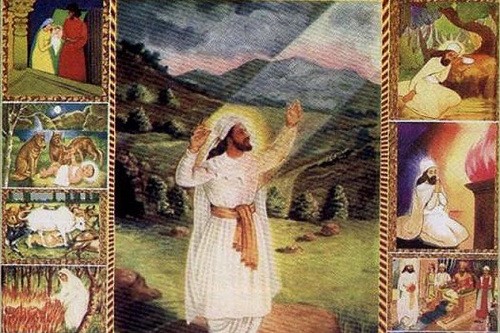
The roots of white masculinist superiority stretch at least as far back as the 12th Century; we can trace it even further back to the ancient Zoroastrian belief system as well as the philosophical writings of Greece. Zoroastrianism is important as their concepts of light over darkness was just one of several of its concepts that became part of Christian theology.
However, we’ll start from the 15th Century and the so-called Age of Discovery. Discrimination wasn’t necessarily based on skin colour; there were hundreds of Africans and Asians at all levels of society living in Europe going back well over a thousand years.
Rather, it was mostly based on religion; the hubris of Catholic Europe absorbed the idealised image of Man created by the Greeks (rational, upstanding, brave, not submitting to anything considered effeminate).
During the so-called Age of Discovery, the Eurocentric image of the self was the basis that Europe defined itself in opposition to the peoples it encountered. Roman Christianity was the benchmark for judging the humanity of people. In the Romanus Pontifex (1455), for instance, we find Pope Nicholas V praising a Portuguese military expedition which:
“[C]ause[d] the most glorious name of the said Creator to be published, extolled, and revered throughout the whole world, even in the most remote and undiscovered places, and also to bring into the bosom of his faith the perfidious enemies of him and of the life-giving Cross by which we have been redeemed, namely the Saracens and all other infidels whatsoever…… situated in Africa,”
We see that same hubris in the Columbus expeditions. Our schools’ history books tell us (when history is taught at all) that Christopher Columbus was seeking an alternative trade route to India. Interestingly, in his log of the first voyage Columbus spoke about how:
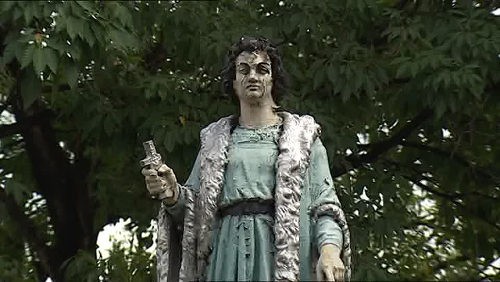
“Your Highnesses decided to send me…to the regions of India, to see the Princes there and the people and the lands, and to learn of their disposition…and the measures which could be taken for their conversion to our Holy Faith”
Had they gotten to India, if trade was their plan at all, it didn’t appear that they had any intention of entering into it as equals. Neither did the Papal Bull Inter Caetera of 1493, which challenged the Portuguese claim of exclusivity over lands “discovered” show any regard for the autonomy or humanity of the peoples living in these lands.
We note here that this Bull served as the foundation for the United States’ western expansion. In 1823, the US Supreme Court case of Johnson v. McIntosh held “that the principle of discovery gave European nations an absolute right to New World lands.”
This meant that the Native Americans only had a right of occupancy, which the settler/colonists could take away at any point. Even before that Papal Bull, the teachings of theologian Francisco Vitoria, the alleged founder of International Law, argued for taking possession of indigenous lands on the basis of Matthew 28:19 (“Go ye therefore and teach all nations……), a forged passage that is not in the earliest manuscripts of the Gospel of Matthew.
His ideas of taking empty land, even if sacred to indigenous people, influenced the thinking of John Locke and concepts of development to this day. For them, the true mark of civilisation included private ownership; collective ownership, which is what existed in many African and indigenous American cultures, was seen as a sign of childlike irrationality.
From the very first contact with native peoples in the Americas, the West’s descriptions of them ranged between childlike and savage brutes. Their justification for the horrific treatment of the native peoples, like the early Portuguese’s enslaving of Africans in the 1450s, was based on the ideas of Aristotle, who believed that some people were by their very nature slaves (a belief they held about the Slavic people of central and Eastern Europe—from where we get the word ‘slave’).
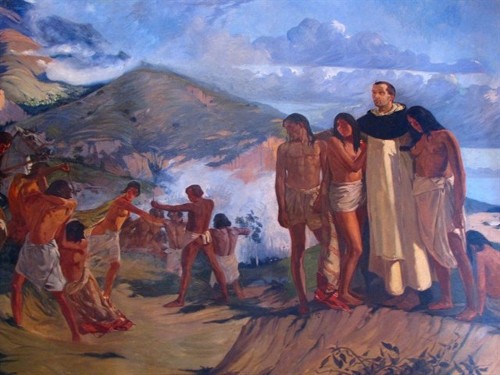
One of the earliest figures providing this intellectual justification for the maltreatment of the First Peoples was Hernández de Oviedo. Another was Juan Ginés de Sepulveda, both of whom were strongly opposed by Bartolomé de Las Casas who condemned de Oviedo in his History of the Indies and who opposed de Sepulveda in a series of historic face-offs known as the Valladolid Debates.
Note, however, that de Las Casas was no real humanitarian; he held equally racist ideas about those whom he was supposedly protecting. As I have already pointed out in this forum, the main question in that debate was not if the First Peoples were to be dominated, but how.
What is important about this debate that provided a model for discussions held to this very day on even simple local issues on dealing with, say, crime or development or spreading “freedom and democracy” is the way in which two opposing sides can both deny the humanity or agency of the subjects they are debating over.
We should also note that the same descriptors with which African people in Trinidad today are tagged (lazy, unproductive, untrustworthy, etc.,) were those used in reference to the native peoples. Also noteworthy is that Michael Perelman, author of “The Invention of Capitalism,” tells us that these were also the same terms used when city-based elites were seeking to break the self-sufficient lifestyle of countryside peasants in England whom they had identified as the best ones to force into the cities to work for wages in the 1400’s.
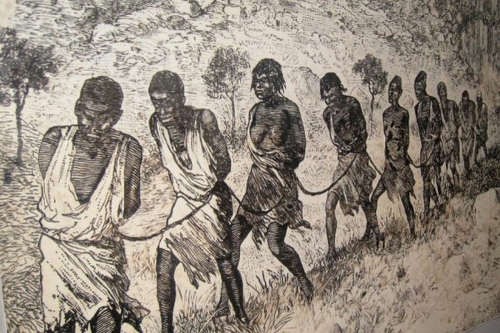
By the 1830’s, the British were well immersed in hubristic beliefs of their exceptionalism anyway. Their identity and notions of freedom emerged out of myths developed by Ancient Rome to rationalise their own colonisation. By the 11th Century, long after the fall of the Roman Empire, slavery gradually became defined as something one only did to religious outsiders—hence the enslaving of Slavs.
But, as white masculinist superiority continued to evolve and take shape, laws were passed in places like colonised North America, prohibiting free Africans from owning slaves (which they did), marrying European women (which they also did) and possessing weapons.
By the time the British colonised Trinidad, slavery was almost exclusively thought of as being synonymous with Africans. British ideological justification for enslaving Africans was aided by the Church, which decreed that Africans “were not baptisable human beings.”
The biblical Curse of Ham was employed to provide “divine” sanction along with Ancient Greek myths about the “Wild Man of the Woods” who was an impulsive, violent, sexual predator.
Even that, however, was not enough.
Raymond Ramcharitar, whose own newspaper columns have been called out from time to time for xenophobic and racially prejudiced utterances, nonetheless made a very important point in his doctoral dissertation “The Hidden History of Trinidad: Underground History 1870-1970” about the “mystification of whiteness” (read, the belief in the omnipotence of the white male authority figure) in our society.

Being in the numerical minority and constantly living under terror of revolt by the labouring masses, a terror amplified by the Haitian Revolution, the French and British elite thought it necessary to create that mystique in order to instill obedience.
Therefore, not only physical violence was used but psychological as well. The white person, particularly the man, had to be seen as always in a position of power; the image of a white Christian God was transferred to the physical white man while books like Boys Own and The Union Jack portrayed heroic, adventurous youths battling dark-skinned, savage hordes who only lived for evil.
Further, religion provided the ultimate psychological weapon through the use of guilt and sin. White authority was expressed as divinely ordained and thus challenges to that authority or calls to improve the social and physical standards of African and Indian people were expressed as challenges to God.
Charles Kingsley, who spent time in Trinidad, wrote about “the glorious work which God seems to have laid on the English race, to replenish the earth and subdue it.”
Post-Emancipation, the idea of whiteness modified the Greek idealised image of the perfect man and ascribed it exclusively to the white man; the light-coloured skin conferred an automatic authority in the eyes of most of the formerly enslaved and later the formerly indentured. In any event, by the early 1800s’, the British saw themselves as the epitome of perfection.
“The Anglo-Saxon Race,” landowner and politician Sir Charles Adderley reportedly said, addressing a group of Warwickshire farmers, “are the best breed in the world. […] The absence of a too enervating climate, too unclouded skies and a too luxurious nature […] has rendered us so superior to all the world.”

Ramirez was warned that “failure to comply will result in further disciplinary action being taken,, up to and including termination of services.”
We shall return to that concept of climate being a factor in black and brown inferiority. Suffice it to say here that, with all this documented information, it’s hard to fathom how some educated people can’t make simple connections between the colonising of the Americas, European/Euro-American beliefs in racial superiority, divide-and-rule policies and the exclusion of other people in that same society who needed to be kept out of effective power.
The main motivating factor behind the colonising of the tropical South was an inflated Eurocentric self-image—that strangely fed off a contrasting notion of self-worthlessness—that arrogated unto itself a right of entitlement to the mineral resources of the South that Europe needed but lacked.
The ostrich approach of sticking one’s head in the sand or up one’s posterior clearly eh wukkin. Neither is the one-dimensional understanding of racism which seems to cloud our understanding of its variations and of the associated issue of racist ideas that can be held by persons of whatever hue or hair texture.
Much more research and many more conversations are needed.
Corey Gilkes is a self-taught history reader whose big mouth forever gets his little tail in trouble. He lives in La Romaine and is working on four book projects. He has a blog on https://coreygilkes.wordpress.com/blog/ and http://www.trinicenter.com/Gilkes/. Vitriol can be emailed to him at coreygks@gmail.com.
 Wired868 Wired868 for smart sport news and opinion
Wired868 Wired868 for smart sport news and opinion
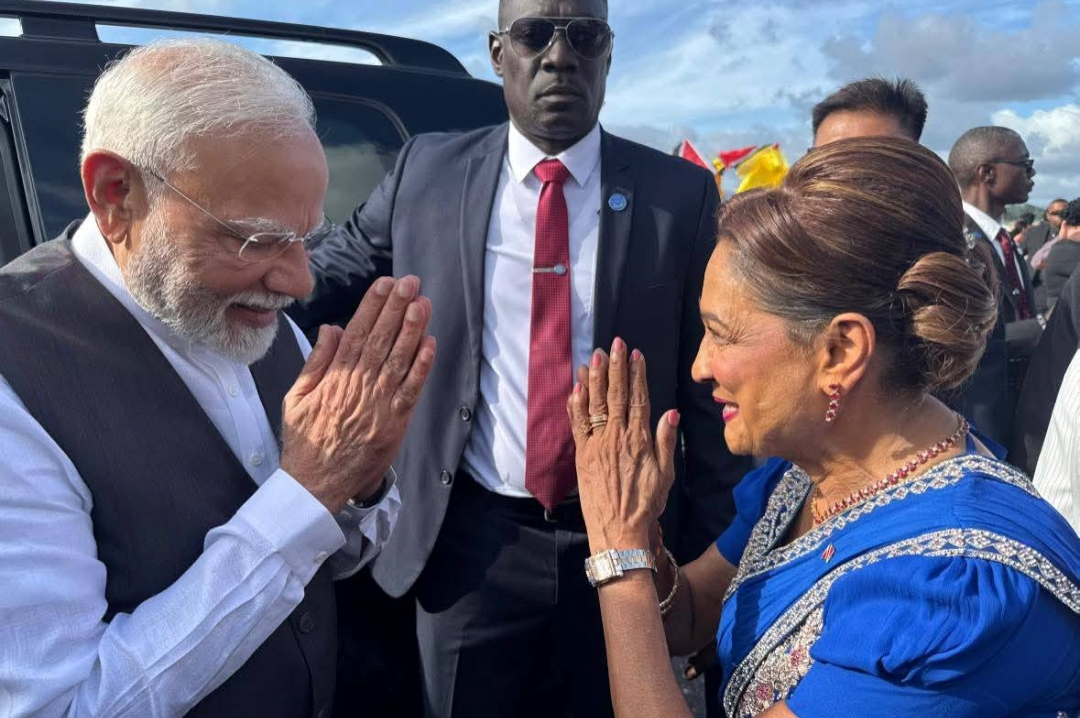






As parents we need to be aware that we are purposely or inadvertently whispering racist ideas into our children’s ears or standing idly by while others in society do.
Not only parents.
Fearless…. everyone needs to share this.
I’m doing exactly that and I watched a video that was imbedded in the article and shared as well.